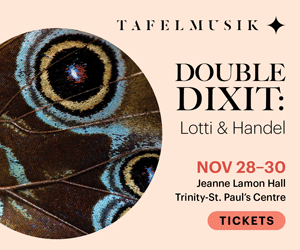It’s only when you leave a country – a culture, a language, a family – that you can really see it. And it’s only then that you can consciously, rather than by inertia, belong to it.
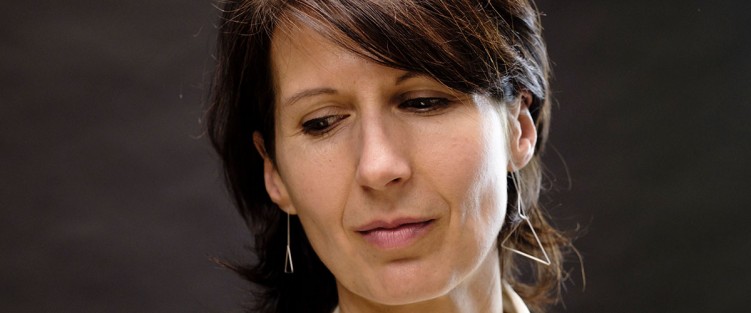 This wisdom comes to most immigrants, expats and refugees by mid-life, but it came to Montreal-based composer Ana Sokolović early in her career, after the first performance of her music in her new country. “Critics described my music as having ‘Slavic soul,’ which stunned me. ‘Slavic soul’?! I’m a contemporary, avant-garde composer, I thought, I’m as far from any kind of national folklore and nostalgia as possible,” she recalls. When she moved to Montreal to work on her master’s degree in the early 1990s, Yugoslavia, in which she grew up, the multicultural egalitarian experiment, was already disintegrating in ethno-nationalist acrimony, and she was eager to say goodbye to the rising ethnocentrism. The point for her was to say something new, not blindly follow the established tradition. But the talk of Slavic flair back then got her thinking about whether she was entirely in control of her own sound-making, or if something else voiced itself in the process, something less conscious. “I realized the local audience detected a certain openness to emotion that they translated as ‘Slavic soulfulness’. Crucially, I realized that it wasn’t a bad thing. And that perhaps I should bring it to light more.”
This wisdom comes to most immigrants, expats and refugees by mid-life, but it came to Montreal-based composer Ana Sokolović early in her career, after the first performance of her music in her new country. “Critics described my music as having ‘Slavic soul,’ which stunned me. ‘Slavic soul’?! I’m a contemporary, avant-garde composer, I thought, I’m as far from any kind of national folklore and nostalgia as possible,” she recalls. When she moved to Montreal to work on her master’s degree in the early 1990s, Yugoslavia, in which she grew up, the multicultural egalitarian experiment, was already disintegrating in ethno-nationalist acrimony, and she was eager to say goodbye to the rising ethnocentrism. The point for her was to say something new, not blindly follow the established tradition. But the talk of Slavic flair back then got her thinking about whether she was entirely in control of her own sound-making, or if something else voiced itself in the process, something less conscious. “I realized the local audience detected a certain openness to emotion that they translated as ‘Slavic soulfulness’. Crucially, I realized that it wasn’t a bad thing. And that perhaps I should bring it to light more.”
We are sitting in her quiet home in Montreal, our only other company her Siamese cat sleeping in a patch of sun on the windowsill. Svadba-Wedding was about to be performed the following week by a young ensemble from Toronto’s Glenn Gould School – her much travelled a cappella opera that uses idioms of Balkan singing techniques and South Slav language phonemes but is musically more like dissonant, rhythm-addled Stravinsky than the Balkans. “It’s only when I physically removed myself from my place of birth that I understood this conversation between tradition and invention,” she says. It’s nothing to do with genes, she says. It’s to do with different spices of how to be in the world. The dialects of humankind. It’s like keeping Occitan in Languedoc alongside French, and not subsuming it under it. “Imagine if the only thing that divided us was this difference in style, the variety in the taste of the terroir? And religions would be there just to serve this cultural side of us. Just so we could sing to God in all kinds of idioms.”
Toronto. Pittsburgh and Opera Philadelphia. Perm with Teo Curentzis. Montreal. Boston. Aix-en-Provence. And Belgrade, of course. Svadba is probably the most performed Canadian opera of the last two decades. Sure, it’s small and inexpensive, emotionally communicative, visceral as a pagan ritual. All that helps. But that still doesn’t explain its popularity. How does she explain it? “It’s mad, isn’t it? But I think part of it is that a wedding is a near-universal experience and a universally understood phenomenon. But here it’s told through a very local perspective. That quote attributed to Tolstoy, ‘If you want to be universal, start by painting your own village?’ It’s that.” And people of all ethnicities have found something in the scenes in which six girlfriends prepare one of them for the wedding.
Before she embarked on Svadba, her second commission by Queen of Puddings Music Theatre in the late noughts, Sokolović travelled back to Belgrade to talk to ethnomusicologists about old South Slav rituals associated with female preparation for weddings. Some of these rituals she included (the henna painting, the weaving of the wreaths), some she didn’t find particularly inspiring (breadmaking). Some would have been inherited from the long Ottoman colonization (the bathing/hammam, and here Svadba doesn’t shy away from eroticism).
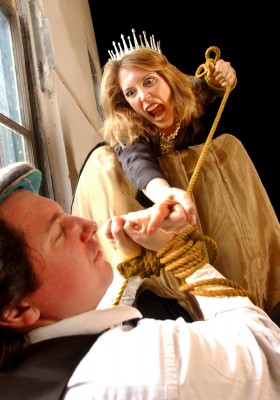 What also made Svadba so easy to follow is, paradoxically, that it’s in the original language. “When I composed The Midnight Court for Queen of Puddings, I needed to make the story legible. The pace is decided by the text: the opera must unfold at the speed of the text, and must follow our understanding of the text. After that, I wanted to create something where no individual words needed to be understood – everything would be understood through music.” And while many South Slav and Serbian words are used in Svadba, a lot of them are exploded into syllables and phonemes, both vowels and consonants, and used as purely musical tools. People generally understand what’s going on, with or without the language, even in concert, she’s noticed. “They understand the emotion.”
What also made Svadba so easy to follow is, paradoxically, that it’s in the original language. “When I composed The Midnight Court for Queen of Puddings, I needed to make the story legible. The pace is decided by the text: the opera must unfold at the speed of the text, and must follow our understanding of the text. After that, I wanted to create something where no individual words needed to be understood – everything would be understood through music.” And while many South Slav and Serbian words are used in Svadba, a lot of them are exploded into syllables and phonemes, both vowels and consonants, and used as purely musical tools. People generally understand what’s going on, with or without the language, even in concert, she’s noticed. “They understand the emotion.”
Some activities which are not traditionally associated with weddings Sokolović introduced precisely for this musicality of words. Nursery rhymes, pattycakes and the alphabet play an important role in the opera. She also needed a dramatic peak, some kind of a scene of conflict, which the night before a wedding usually does not have. But what it has is the nerves – and the tension. So she played that up.
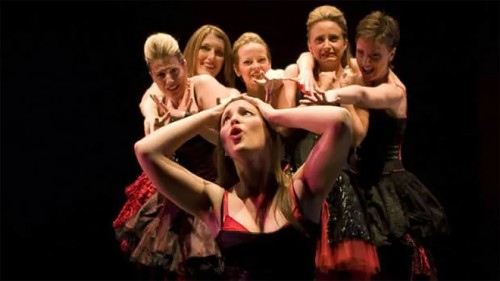 I tell her that I’ve noticed that people who have no interest in the institution of marriage also find the opera powerful, because it’s clearly about a rite of passage – the change from girlhood to womanhood, the leaving of childhood behind and moving to the unknown. I’ve also found the music very dark, I tell her; it’s all those menacing seconds, like Bluebeard’s Castle! And for women of the Balkans, and many other places in the world, the wedding may or may not have been a joyful event, depending on how they may or may not have been treated by the new family. “I get that,” she says. “It’s that complexity of feeling: the joy and the sadness. I mean, how do you explain the word seta in English? Something like Portuguese saudade? Sadness, but of a pleasant kind? There is no seta in Svadba I don’t think, but there are ambivalent feelings.”
I tell her that I’ve noticed that people who have no interest in the institution of marriage also find the opera powerful, because it’s clearly about a rite of passage – the change from girlhood to womanhood, the leaving of childhood behind and moving to the unknown. I’ve also found the music very dark, I tell her; it’s all those menacing seconds, like Bluebeard’s Castle! And for women of the Balkans, and many other places in the world, the wedding may or may not have been a joyful event, depending on how they may or may not have been treated by the new family. “I get that,” she says. “It’s that complexity of feeling: the joy and the sadness. I mean, how do you explain the word seta in English? Something like Portuguese saudade? Sadness, but of a pleasant kind? There is no seta in Svadba I don’t think, but there are ambivalent feelings.”
She pauses for a few beats. “It all probably comes from the Mediterranean carnival. An occasion for ambivalent feelings, if there ever was one! It’s the films of Kusturica, Fellini, Buñuel. You’re happy and you’re sad.” Milica is not sad because she’s about to get married, but her leaving is. “She is never going to be the same person. There’s a line in the opera, ‘Your mother will cry.’ Of course. We cry at weddings. My mother cried on my first day of school. A new chapter opens. It’s not quite clear why we cry at rites of passage, but we do! And this speaks to people, whether we get married or not, whether we are female or male.”
Doesn’t contemporary music have something of a PR problem, though, I ask? It’s often dastardly to sing – some composers have no interest in writing voice-friendly stuff. It’s unemotional (the worst thing is to be a Puccini – like the well-funded American composers end up being). It doesn’t see itself in the business of giving pleasure. It’s often written by people who teach at universities and effectively compose for tenure. Those who work in the tradition of serialism never see a second performance – and probably for a good reason. Scratch that: most don’t experience a second performance. I’ve been to contemporary music concerts with four people in the audience; but as long as the grants from peers are coming down, the small contemporary music organization has nothing to worry about. Am I wrong?
“We are in 2021, though. A lot has happened and keeps happening from the time that serialism, or dodécaphonie in French, was major news,” she says. “There isn’t one thing, one school, with or against which we all have to define ourselves. There are a lot of branches on the tree. Schoenberg and Boulez had to exist. We are continuing on, but in different ways. There is a divide in classical music in that there is an audience that only listens to contemporary, and a usually older audience which prefers the traditional works of the Western canon. But imagine if there was a museum of anything that stops at the Romantic Age. It would be a strange museum, no?” And the contemporary vs. the traditional is a particularly sharp divide in music. In other art forms – visual, theatre, novels – it’s much less present, she adds.
Are we talking about the modernists? I probe. Does modernism in music exist as a tradition now, or is it still a project? And does it even matter – is this something that only interests academics and critics, and the audience not in the least? Does Canada even have any modernists? I love Harry Somers’ Louis Riel, which I presume is in that tradition, but John Weinzweig, for example, is not performed any more anywhere, and having tried some of the recordings, I can’t say I’m too sad about it.
“It doesn’t matter to me whether I’m one or not – most people would say that I’m not,” she says. “But those boundaries are all porous. A lot of modernists are using extended techniques, which they borrow from, say, world music, folk, East European or South American nations, tribe cultures… That would technically make them post-modernists, no? We can have these conversations. But when I’m in my creative stage, it’s something I don’t think about. I do what I feel I have to do – what is urgent for me to do. It’s a necessity, creation. That’s what guides me.”
So, what to say to those who say contemporary music just doesn’t grab them? Or to music programmers who give living composers only the first ten minutes of a two-hour symphonic concert. “OK, but there are so many contemporary musics,” she counters. “You can’t decide about the entirety of visual arts by looking at one or two paintings. The tricky thing about music is, it demands time. It can’t be compressed or abridged.”
So composers have to open their pieces with clickbaity things, like newspaper articles? I ask. “Sometimes!” she laughs. “I think more of us are aware of this demand than we admit.” And composers have to be aware that they are making music for all kinds of audiences: specialist, well-informed non-specialist, nonspecialist, and even hostile. A filled concert hall is always a mix.
Besides, composer is a fairly recent line of work, says Sokolović. “In a lot of early eras you are always something else – a cantor, an aristocrat’s entertainer, a singer, an instrumentalist. I find that today a lot of composers are building their careers in that very old school way. A lot of them are working musicians, or perform their own pieces, or write ‘applied’ music for film. It’s a very lively scene.” As a professor at Université de Montréal who works with a lot of young musicians, what advice does she give them? “Now this is going to sound cheesy, sorry! The thing that’s most important to me is that they are good people. And that does include traditional university fare such as composition skills, knowledge of history of music, orchestration, instruments. But I also include in that knowing how to collaborate. Being aware that you’re not the centre of everything. Knowing that you’ll have to work with many, many other people, that you’ll have to write for them. You are in effect never alone. Others will be catalysts of your music. A lot of us composers say, Well I just write for myself. Well then, fine, you never have to leave the room and work with other people. But the job requires the opposite.”
And how much do you want your music to be heard? “That’s the next question,” she says. “There needs to be a desire to communicate. Ask yourself, why would anyone want to hear your music? And to hear it again, and for the third time, and then maybe get the CD? I’m not talking about the commercial side of things. I’m talking about communication.”
What about the notorious Milton Babbitt article “Who cares if you listen?”, a phrase which haunts contemporary music like phantom tinnitus? Do composers genuinely want to communicate? “Not all music is expressive in the same way, nor should it be,” Sokolović says. “Sometimes you want to create a distance, and that’s OK. But your piece has to be an event of some kind. Something must happen. You’re communicating something of human interest. Something that the person listening would want to experience again.” We’re all reacting to our own time, she says, and Babbit reacted to something in his. That context called for that article, and those particular words. “Every age has boring music, good music, all kinds of different music,” she says.
Another tack: Standard gossip of late 20th-century music is, I venture, that Boulez was the alpha and omega of French musical life and that unless you were one of the “Boulez mafia” you could expect your career to be somewhat complicated. “But in Boulez’s time, someone like Ligeti existed! He had a different path, while he was also a modernist. I think Ligeti, unlike numerous other 20th-century composers, is more influential now than in his own time.” Was he an influence for you? “Yes, and for many others. Ligeti was hugely important for me, as was Gérard Grisey. I really feel Grisey’s music.”
Sokolović is one of those composers who happily seek out the work of their colleagues and students, and is always curious about what else is happening on the music scene. “Two of my former students are really interesting, Keiko Deveau and Ofer Peltz. And I went to Ostrava Days Festival last year and discovered Czech composer František Chaloupka, who is completely his own.”
How does she explain the international popularity of Claude Vivier, probably the only Canadian composer regularly performed abroad these days? “I did not mention him, because it almost goes without saying, but I adore Vivier’s work. I think Ligeti might have had something to do with his later rise. One of Ligeti’s students, Denys Boulianne, great Canadian composer, brought Vivier’s work to Ligeti’s attention, and it struck Ligeti as important.” What Sokolović loves about Vivier, she says, is that he found his unique voice. “Vivier at first wrote dodecaphonic music but then left Canada and went to Darmstadt to work with Stockhausen, and started composing as Vivier. He found a way to write his own music. Like many others, he had to leave his home to find his voice.”
In the works
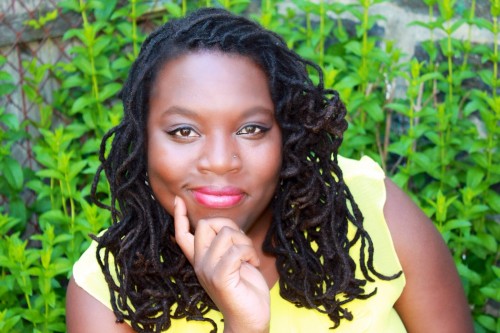 The new Boston Lyric Opera production of Svadba will be the first cinematic version of the opera. The three-time winner of the New York Metropolitan Opera National Council Auditions, African-American soprano Chabrelle Williams sings Milica, who is to be married – it will transpire – to a woman. Available to stream in winter 2022.
The new Boston Lyric Opera production of Svadba will be the first cinematic version of the opera. The three-time winner of the New York Metropolitan Opera National Council Auditions, African-American soprano Chabrelle Williams sings Milica, who is to be married – it will transpire – to a woman. Available to stream in winter 2022.
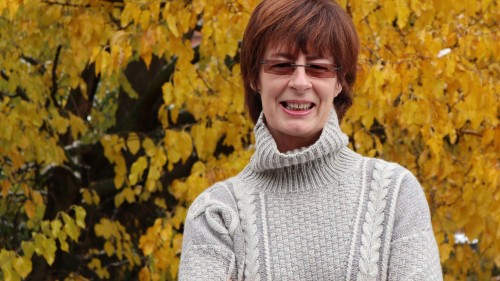 The COC commission The Old Fools, to the libretto by Paul Bentley based on Philip Larkin’s poem, is near completion – give or take a few months of work on orchestration, says Sokolović. The verses “Perhaps being old is having lighted rooms / Inside your head, and people in them, acting” inspired this story of an old man near the end of his life who’s having to move out of his house into a care home. Sokolović collaborated on the shaping of the opera, across the Atlantic, with the original Svadba music director Dáirine Ní Mheadhra.
The COC commission The Old Fools, to the libretto by Paul Bentley based on Philip Larkin’s poem, is near completion – give or take a few months of work on orchestration, says Sokolović. The verses “Perhaps being old is having lighted rooms / Inside your head, and people in them, acting” inspired this story of an old man near the end of his life who’s having to move out of his house into a care home. Sokolović collaborated on the shaping of the opera, across the Atlantic, with the original Svadba music director Dáirine Ní Mheadhra.
Lydia Perović is an arts journalist in Toronto. Send her your art-of-song news to artofsong@thewholenote.com.



